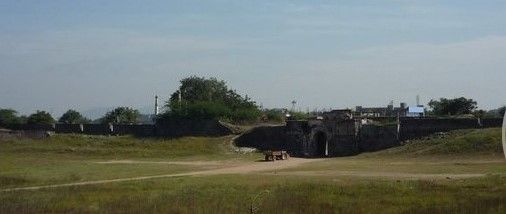For smooth Ad free experience
For smooth Ad free experience
Centuries ago, the Polasa kings reigned over a region that is now recognised by the small town bearing their name in the Karimnagar district of Telangana. An inscription in Kannada unveiled that this area served as the capital during the rule of Meda Raju I, a Polasa king. His ambitious son Jaggadeva, upon assuming the throne, significantly expanded the kingdom through twenty-one momentous wars throughout his lifetime. Approximately six centuries later, this region became known as Jagtial, paying homage to two European engineers who propelled the fame of this land with the construction of a star-shaped fort.

Story of Jagg Deva temple
The presence of the Jagg Deva temple, a few kilometres from Polasa village, bears witness to the adventurous Polasa king who ruled this Deccan region in the 11th century. Around six centuries later, the Mughal governor Nawab Ibrahim Baig Khan Dhounsa and the Bengal commander general Mir Jafar ud Daulah joined forces with the French to overthrow the contemporary rulers of this land. In celebration of their victory and to establish their sovereignty, the Nawab commissioned two European engineers to construct a fort with a strong defence system, utilising newly discovered military techniques, amenities, and resources.
The fort, conceptualised by two Frenchmen named Jack and Tal, featured a unique star-shaped structure reminiscent of their homeland's castles. It was built at an elevation of 264 meters using abundant stones from the region, held together by traditional Deccan lime. One notable addition to the fort's infrastructure was a moat, where two pulley-drawn, massive wooden doors served as a bridge, allowing entry only to recognised friends. Visitors had to be confirmed as allies before crossing the moat.
Unfortunately, the passage of time and human plundering have left only the enormous pulleys on the main outer wall as visible remnants of the doors. Most internal structures of the fort, such as the ammunition storage rooms, have been lost to decay and destruction. However, the fort's ruins used to attract visitors, thanks to the intact step well in the northwest corner, which still provides usable water to local villagers.
The defence system employed by ancient kingdoms involved digging out an area around the city walls and creating earthworks that deterred enemy advances. The introduction of masonry rampart walls and accompanying moats further fortified these defences, making it difficult for enemies to use battering rams when the moats were drained. However, the advent of gunpowder rendered moats obsolete. Despite this, the Mughal governor spared no effort in fortifying his domain. The Jagtial Fort, built in the 17th century, was surrounded by four water bodies known as Mote Pond, Kandla Palli, Mupparaap, and Dharma Samandar. These man-made ponds acted as moats on different sides of the outer walls and still retain water today, albeit non-potable.
Although located 50 kilometres from Karimnagar, the Qila Fort of Jagtial has gained recognition and honour for its historical significance, particularly after the formation of the Telangana state and the government's efforts to revive the glory of its lands. During the fort's restoration, authorities were astounded to discover numerous massive cannons scattered throughout the ruined ramparts, showcasing the military prowess and robust defence system provided by the Mughal governor. Alongside two cannons on either side of the main entrance, more than three dozen equally large cannons were found strategically positioned within the fort.
One of the cannons, as declared by an Urdu inscription, was installed by the clock repairer Mohammed Khasim.
Some cannons were buried under collapsed debris or overgrown vegetation, but the renovators retrieved and placed them on individual pedestals, forming two welcoming columns on either side of the path to the entrance. Another monument bestowed upon the region by the rulers is the Jama Masjid, which continues to embody its glory and reverence among devotees.
The town of Jagtial not only boasts of the fort but also showcases historical buildings from the 18th century, such as the four-faced clock tower standing tall in the heart of the town, built by Nizam's minister, Khasim Rizvi. Additionally, the Qila of Jagtial is flanked by other 18th-century structures, which currently house the local court and the Tahsildar office. Previously, the fort's ramparts and ruins served as playgrounds for local children and as a favourite spot for morning walks or evening strolls. However, to the disappointment of the general public, the site was closed to visitors last year. Meer Kasim, a local community leader, expressed his regret to a newspaper, stating that even schoolchildren are now denied the opportunity to embark on a historical journey into the fort. He emphasised:
“It is unfortunate that the administration is preventing people from visiting the fort despite the renovation, and official functions being held on the grounds. The fort should be open to all, and if necessary, locked at night.”
0
You might be interested in reading more from
